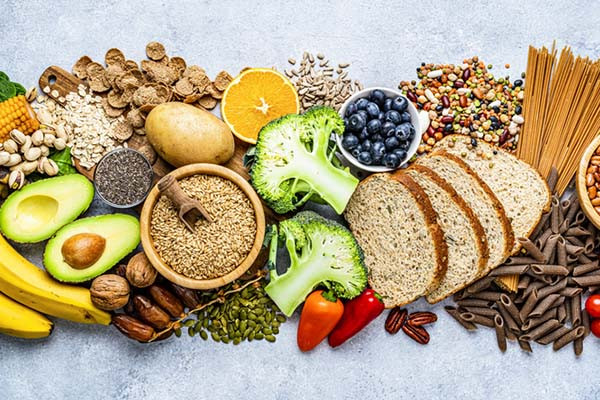Prebiotics: Understanding their role in gut health
- Reviewed by Howard E. LeWine, MD, Chief Medical Editor, Harvard Health Publishing; Editorial Advisory Board Member, Harvard Health Publishing

Our gastrointestinal tracts contain about 100 trillion microorganisms, mainly bacteria. These organisms are collectively known as the gut microbiome.
The vast majority of bacteria in our microbiome are good. Good bacteria's primary role is to counterbalance the bad kind to keep your gut healthy. They offer other health benefits as well.
But sometimes the balance between good and bad bacteria gets disturbed. That's where probiotics come in. Probiotics are live bacteria and yeasts. They replenish your gut with more good bacteria to restore the balance between good and bad bacteria.
Lesser known, but also important to maintaining a balanced microbiome, are prebiotics.
What are prebiotics?
Prebiotics are ingredients in certain foods that your intestines can't fully digest. Examples of prebiotics include some starches, oligosaccharides, inulin, and pectin. They tend to be most plentiful in high-fiber foods.
Prebiotics work in tandem with probiotics. Probiotics are live microorganisms that maintain or improve the balance of good to bad bacteria in your digestive system. Some examples of foods that contain probiotcs are yogurt, kimchi, many cheeses, pickles, kombucha, and sauerkraut.
Prebiotics, on the other hand, act as nutrition for gut bacteria, helping them to flourish. When bacteria are fed what they need to stay healthy, they keep our bodies healthy in return.
Potential health benefits of prebiotics
Prebiotic foods can improve your gut microbiome and enhance your health. Experts are still learning more about the benefits of prebiotics. But research has found a link between higher prebiotic intake and
- improved intestinal absorption of dietary calcium
- better blood sugar control
- a well-functioning immune system
- a reduce risk of colorectal cancer.
The role of prebiotics may extend beyond being a food source within your microbiome, too. One recent study showed that people who consumed 30 grams daily for two weeks of foods high in a plant-based prebiotic called inulin were more likely to select medium- to low-calorie foods over high-calorie ones.
Furthermore, their MRIs showed less activation in their brain's reward network when shown high-calorie foods. The study suggests that eating prebiotic foods might help people make healthier dietary choices.
Prebiotic foods to add to your diet
Prebiotics are found in a variety of high-fiber grains, vegetables, and fruits. Some of the best prebiotic foods include:
- garlic
- onions
- bananas
- Jerusalem artichokes
- soybeans
- asparagus
- wheat and whole-grain products such as cereals and breads.
Eating more prebiotic food is not a good idea for everyone. For example, some people with diarrhea-predominant irritable bowel syndrome (IBS) may find a diet heavy in prebiotics worsens their symptoms. On the other hand, people who struggle with constipation may find improved bowel function with prebiotics.
Finding the right balance of prebiotic food that works for you is key. Starting slowly and gradually increasing prebiotic foods can help avoid possible digestive discomfort.
About the Author

Lisa Catanese, ELS, Health Writer
About the Reviewer

Howard E. LeWine, MD, Chief Medical Editor, Harvard Health Publishing; Editorial Advisory Board Member, Harvard Health Publishing
Disclaimer:
As a service to our readers, Harvard Health Publishing provides access to our library of archived content. Please note the date of last review or update on all articles.
No content on this site, regardless of date, should ever be used as a substitute for direct medical advice from your doctor or other qualified clinician.















